

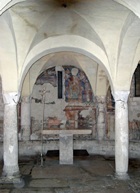
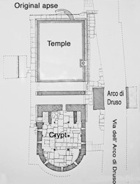
In the remodelling of the late 18th century, the entrance to the crypt from the church was closed, and it was given its own entrance in the back wall.
The present entrance, which is in the left aisle of Sant’ Ansano, was opened in 1971, using the remains of what had been a flight of steps from the forum to the Roman temple.
The crypt is in the form of a nave and two aisles that are separated by columns (9th century) that probably came from the original church.
Relics of St Isaac
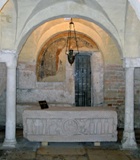
The original sarcophagus was sold in the 19th century, the relics were moved into a new one that was donated by Pope Pius IX, who was Bishop of Spoleto in the period 1827-32.
-
✴The relics have recently been enclosed in a copy (1999) of the original sarcophagus, which stands in front of the back wall of the crypt.
-
✴The original sarcophagus was recovered is now in Room 5 of the Museo Nazionale del Ducato di Spoleto.
-
✴The 19th century sarcophagus was used in 2000 for the relics of the Blessed Simon of Collazzone and is now under the high altar of Sant' Ansano.
Frescoes (11th century)
The frescoes on the walls of the crypt are the among the oldest that survive in Spoleto. They were mostly detached for restoration in the 1950s and then returned to their original locations. A comparison of these frescoes with the Biblical scenes on the bell-tower of the Benedictine Abbey of Farfa, which are known to date to the third quarter of the 11th century, supports the attribution of a similar date to the frescoes of Sant’ Isacco.
Starting from the back wall and proceeding clockwise, the frescoes depict:
Back Wall
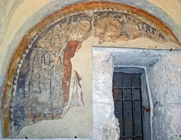
-
✴the capture of Christ.
Left Wall
-
✴Christ washes St Peter’s feet;

-
✴the Last Supper;
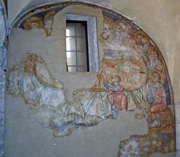
-
✴the beheading of a saint and glorification of a bishop saint;
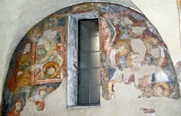
-
✴a fragment (15th century) of a monk saint, which was uncovered on the pilaster in 1971; and
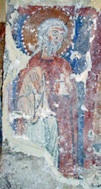
-
✴the Madonna and Child with angels.

Apse
-
✴St Michael and two monk saints, probably St Isaac and a colleague;
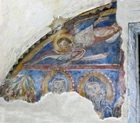
-
✴the Madonna and Child enthroned with angels and St Martial (the second abbot of San Giuliano, who is identified by inscription); and
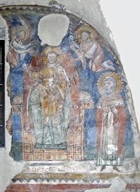
-
✴St Isaac, who pacifies a furious ram that is being attacked by a wolf.
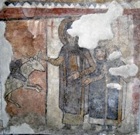
Right of the Apse
-
✴Christ crowns two monk saints;
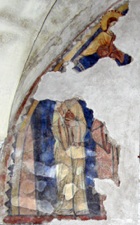
-
✴fragment of an unidentified scene;
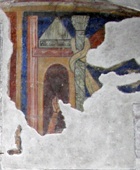
-
✴fragment of an unidentified scene involving a young man and a child;

-
✴St Isaac blessing a young monk; and
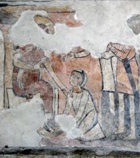
-
✴St Isaac and a boy with a basket of food. This is the only scene from the life of St Isaac depicted here that has a surviving literary source (the Dialogues of Pope Gregory I). A devout man entrusted the boy to carry two baskets of food for St Isaac and his community, but the boy hid one of them so that he could retrieve it later for himself. St Isaac , guessing what had happened, advised him to be careful when he retrieved it because a snake was hiding inside.
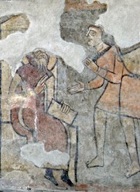
Right Wall
-
✴an unidentified scene with three monk saints.


